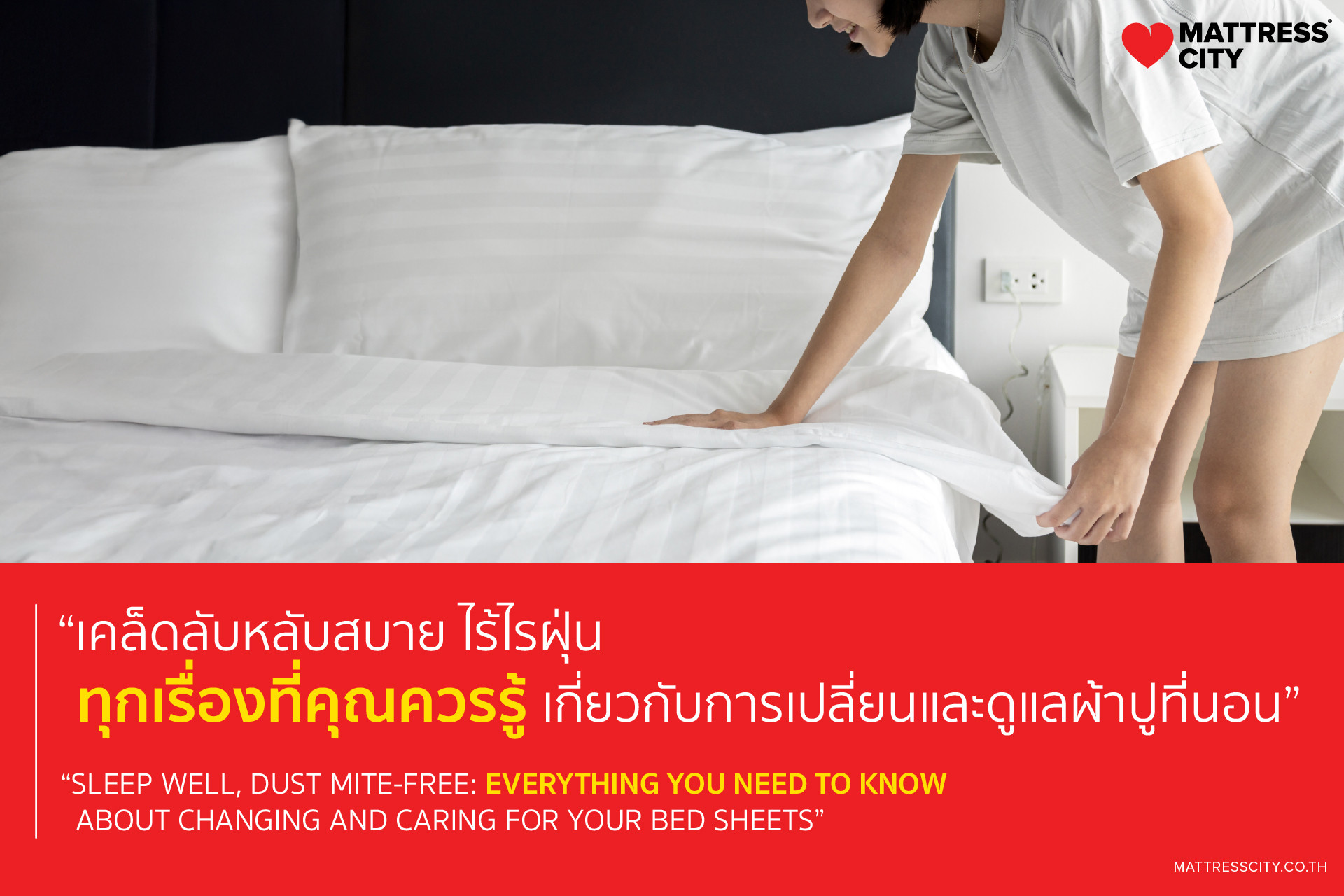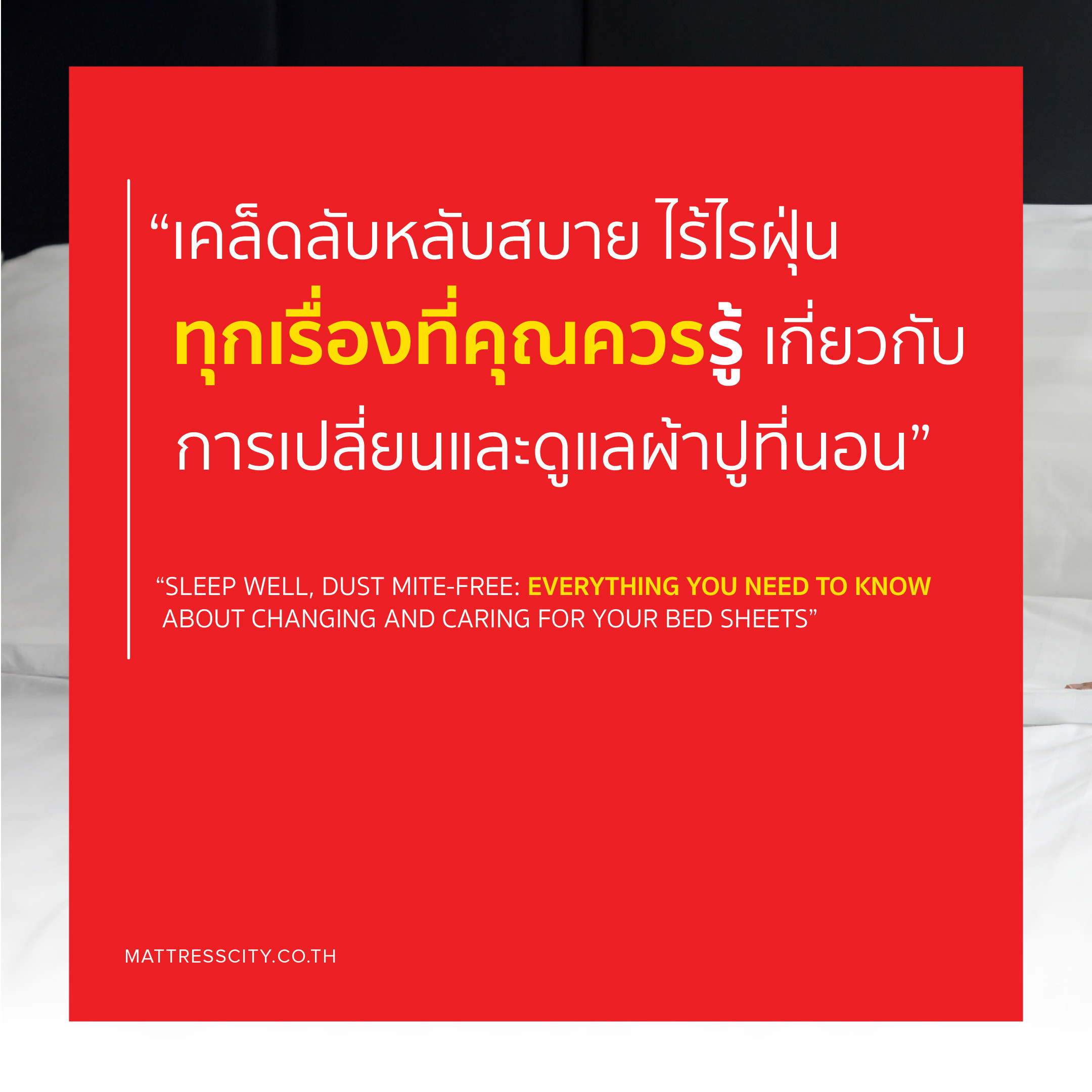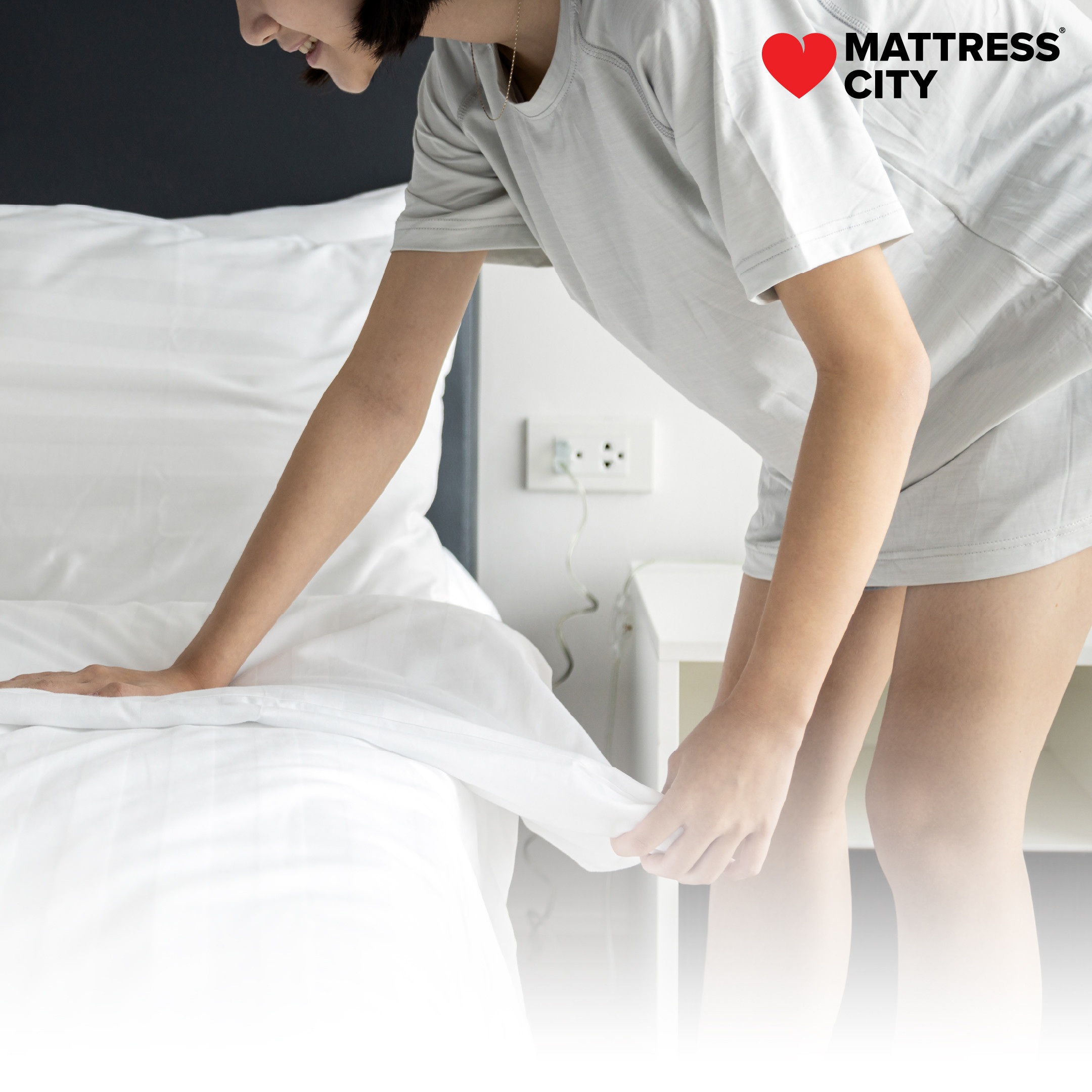Everyone knows it's important to keep bedsheets clean. But did you know that changing them too infrequently or washing them the wrong way can lead to allergies, musty odors, and skin issues without you even realizing it?
Today, let’s clear up some common misunderstandings and learn how to properly care for your bedding to ensure better sleep and a fresh start every day.
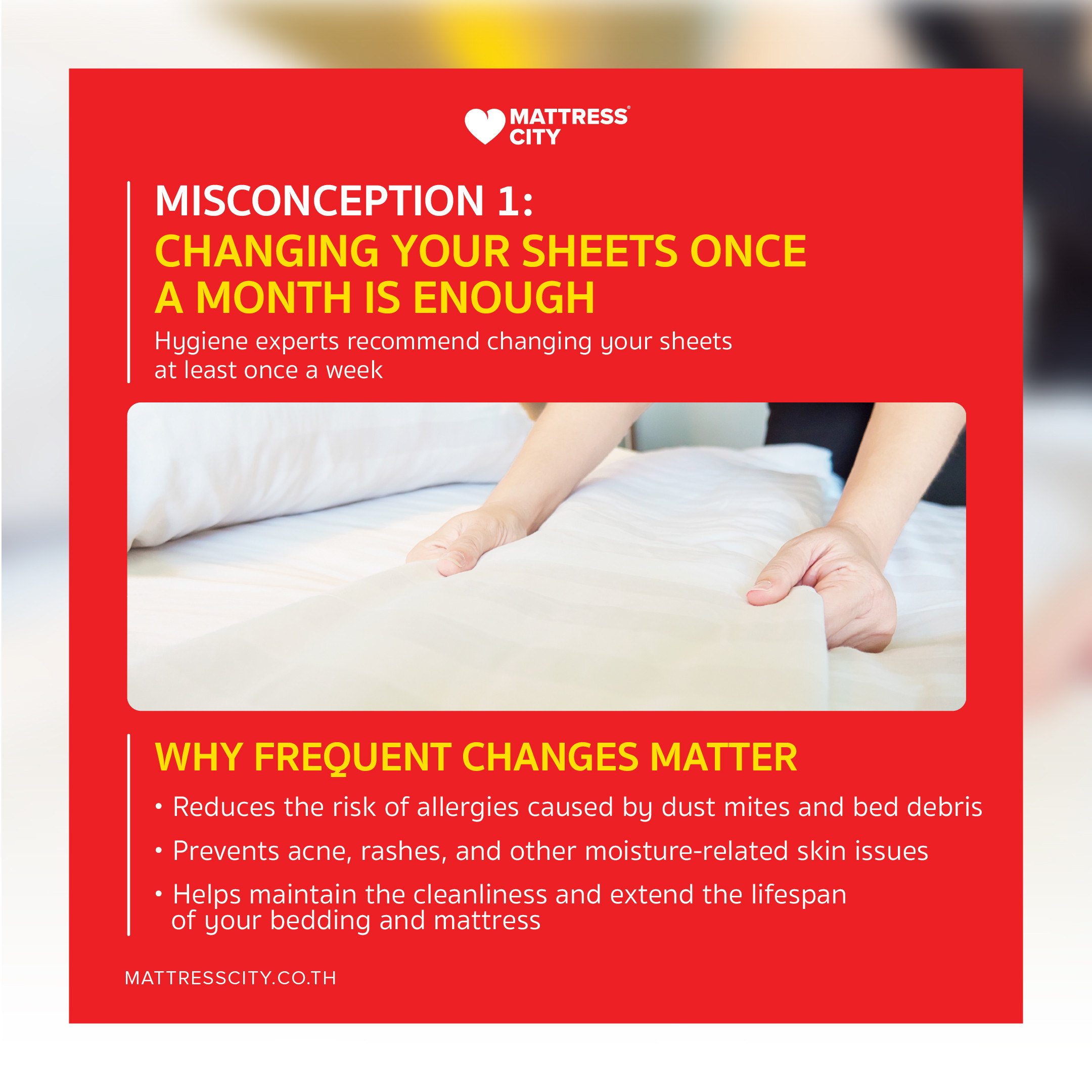
❓ Misconception 1: "Changing your sheets once a month is enough"
Hygiene experts recommend changing your sheets at least once a week—especially in hot and humid climates like Thailand. Such environments encourage the buildup of dust mites, sweat, bacteria, and dead skin cells.
Why frequent changes matter:
- Reduces the risk of allergies caused by dust mites and bed debris
- Prevents acne, rashes, and other moisture-related skin issues
- Helps maintain the cleanliness and extend the lifespan of your bedding and mattress
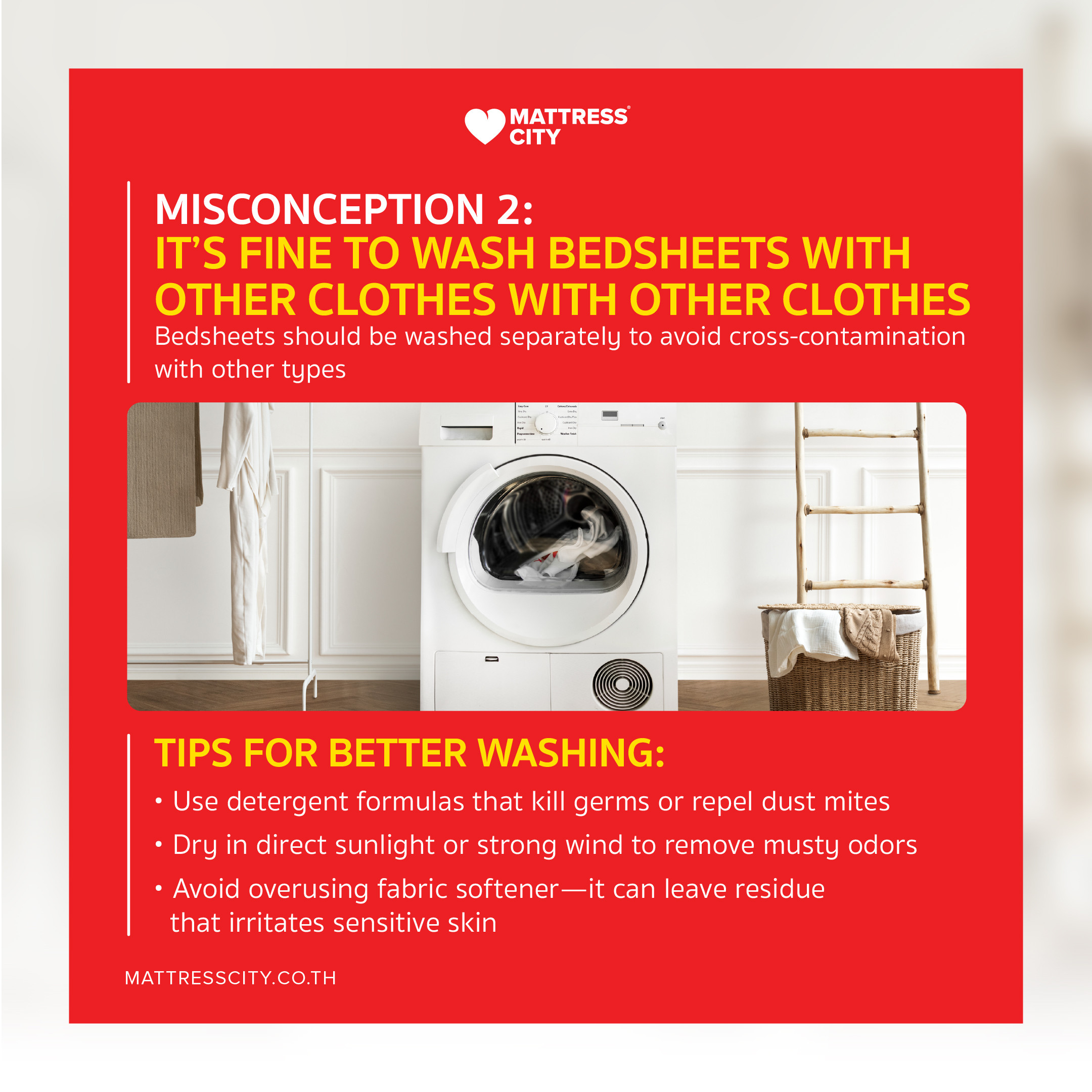
❓ Misconception 2: "It’s fine to wash bedsheets with other clothes"
Bedsheets should be washed separately to avoid cross-contamination with other types of fabrics. Use hot water (at least 60°C) to effectively eliminate bacteria and dust mites.
Tips for better washing:
- Use detergent formulas that kill germs or repel dust mites
- Dry in direct sunlight or strong wind to remove musty odors
- Avoid overusing fabric softener—it can leave residue that irritates sensitive skin
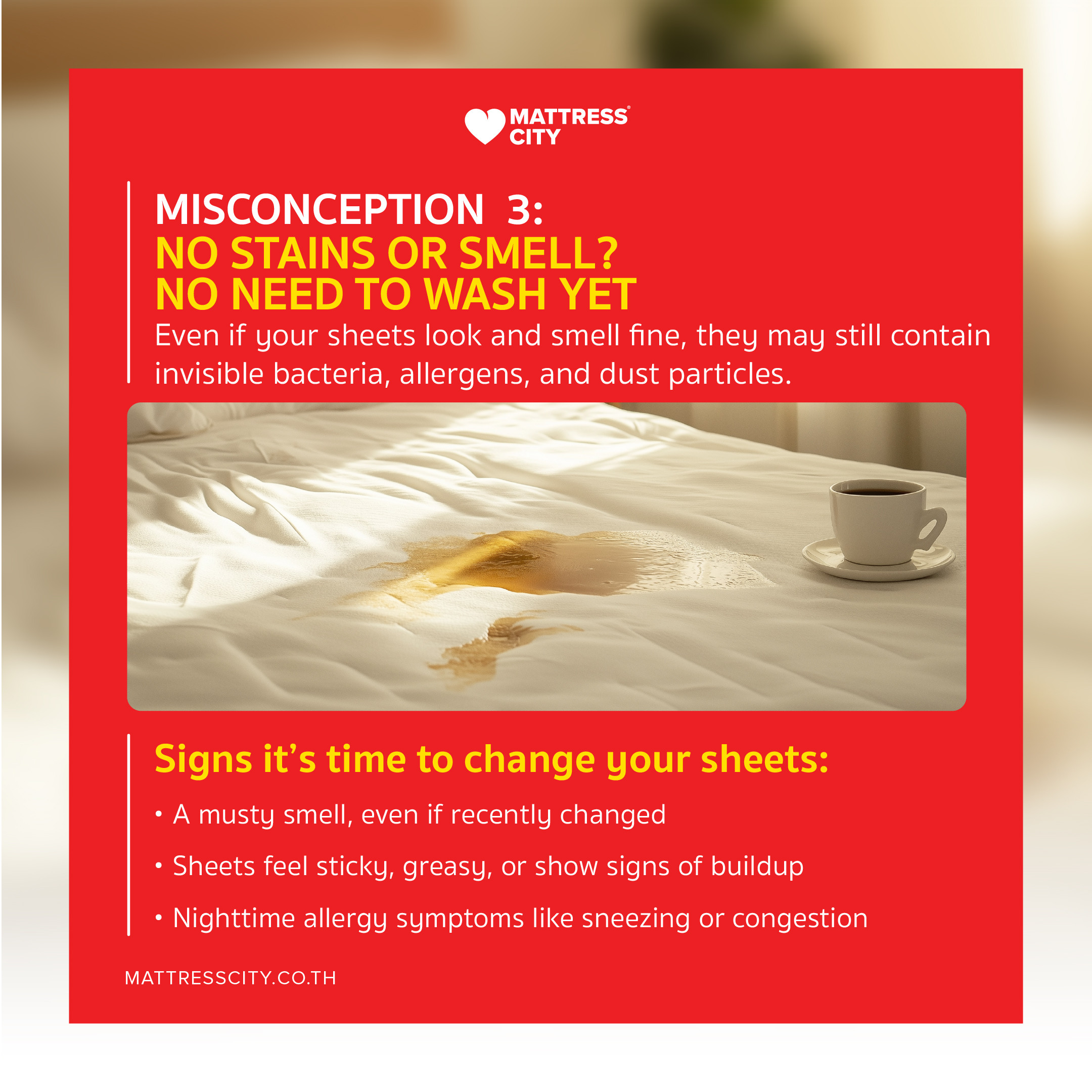
❓ Misconception 3: "No stains or smell? No need to wash yet"
Even if your sheets look and smell fine, they may still contain invisible bacteria, allergens, and dust particles. These can cause bad odors and long-term hygiene issues.
Signs it’s time to change your sheets:
- A musty smell, even if recently changed
- Sheets feel sticky, greasy, or show signs of buildup
- Nighttime allergy symptoms like sneezing or congestion
🛏️ Tips for Allergy-Free, Restful Sleep
✅ Change sheets at least once a week
✅ Wash with hot water and antibacterial detergent
✅ Avoid harsh chemicals if you have sensitive skin
✅ Use dust-mite-resistant covers, especially for allergy sufferers or small children
✅ Dry in sunlight regularly to prevent fungal buildup
…………………………………………………………………………………………………………………………………
🔍 Frequently Asked Questions (FAQ)
Q: What type of bedsheets are best?
A: In tropical climates like Thailand, opt for breathable sheets that reduce humidity and help regulate body temperature. We recommend the Dunlopillo Verona set, made from Lyocell for a silky-soft touch. With a thread count of 990 per 10 sq.cm, it's crafted using eco-friendly processes and natural cellulose fiber—twice as smooth as regular fabrics and hypoallergenic.
Q: Are light or dark-colored sheets better?
A: Light-colored sheets show stains more easily and are ideal for cleanliness-focused users. Dark sheets are better for those who can't wash frequently and want to mask minor stains. Try the LOTUS ATTITUDE: Essence Collection, featuring unique Earth Tone designs. Woven from natural Lyocell fibers with a thread count of 800 per 10 sq.cm, these sheets are both cozy and environmentally friendly.
Q: How many sets of bedsheets should I own if I don’t have time to wash them often?
A: Ideally, keep 2–3 sets on hand for weekly rotation—especially if you have children or pets sleeping on the bed. We recommend the Omazz® New Tencel Print collection—a luxurious, silk-like bedding made from 100% natural TENCEL® fibers. It feels cool like linen, soft on the skin, and supports restful, healthy sleep.
Don’t forget Clean bed = Better sleep = A better life
Taking care of your bedsheets is a way to care for yourself and those you love.



 BEST BRAND
BEST BRAND BEST SELLER
BEST SELLER FIND STORE NEARBY
FIND STORE NEARBY WARRANTY REGISTRATION
WARRANTY REGISTRATION